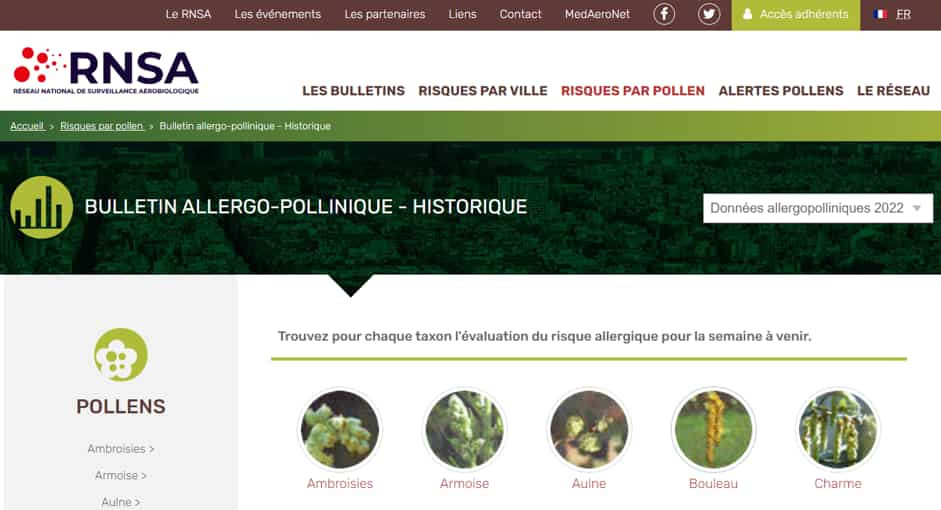
Pollen is a real nightmare for those who are allergic to it. In this article we will see what it is, when it appears and if a pollen mask can protect you from pollen?
What is pollen?
Pollen is simply part of the life cycle of plants, as it consists of microscopic grains of 2 to 200 µm produced by the male organs of flowers, the stamens, in order to fertilise the female flowers. To the naked eye, it looks like dust because the grains are so fine and it is for this reason that pollen contributes to poor air quality.
Because of their very small size, most of the pollen grains will lodge in the eyes and upper airways, mainly in the nose and sinuses. Not all pollens are allergenic. Fortunately, they already bother 25% of French people who are very sensitive or even allergic to them as soon as the season starts.
Even if, depending on the species, it is possible to find pollen all year round, the grass pollen season starts as soon as the first fine days of spring.
There are three pollen seasons depending on the plant
Tree pollens from January to April
The pollination of trees starts in early January and lasts until the end of April.
There are six particularly allergenic tree species: birch, plane, beech, oak, willow and cypress, whose pollen measures on average between 20 and 60 microns.
Grass pollens from April to August
This is the season of the famous “hay fever” or allergic rhinitis, which accounts for almost half of all pollen allergies as all regions are affected.
There are three types of grasses that have allergenic pollens ranging in size from 15 to 150 microns:
- Forage grasses which are plants used for animal feed, in the form of pasture or hay. This is trivially the grass of the meadows.
- Cereal grasses which include wheat, oats, rye and barley. Cereal grasses are also consumed in the human diet and can cause food allergies.
- Ornamental grasses are hardy plants that beautify our gardens such as angel hair or pampas grass.
Herbaceous pollens from August to October
These summer pollens are perfect for spoiling the holidays. Of the hundreds of species, ragweed is the best known with an allergenic potential of 5/5 according to the RNSA. Ragweed pollen is particularly concentrated in the Rhône-Alpes region, Burgundy, central France and Provence, although it tends to spread to other French regions. Herbaceous pollen measures from 3 to 200µm.
The French website www.pollens.fr allows you to find out the level of pollen present in the air for each type of pollen, city by city. A very effective tool for allergy sufferers. A mobile application also exists to warn of alerts.

What are the symptoms of a pollen allergy?
The best known form is allergic rhinitis, which is accompanied by a runny nose, a lot of sneezing and throat irritation.
In half of the cases, it is accompanied by conjunctivitis, i.e. red and itchy eyes.
Be careful, because an untreated allergy can develop into asthma.
The most permanent response is desensitisation, which consists of exposing the allergic person to the substance, in low doses, over a period ranging from a few months to several years so that the body can gradually get used to it.
The immediate response remains the use of antihistamines (medication that counteracts the effects of histamine, an inflammatory substance released in large quantities by the cells in the event of an allergic reaction) such as the well-known Zyrtec.
It is also advisable for the most sensitive people not to expose themselves to pollen, even if this remains a challenge given their extreme volatility. They are even found in the middle of the city, even in homes.
Does an anti-pollution mask protect from Pollen?
Given the minute size of pollens and their extreme volatility, wearing an anti-pollen mask can be a very good solution provided that it filters particles smaller than 2 microns and that it is well sealed so that 100% of the air inspired passes through the filters.
The Frogmask masks meet these two conditions perfectly since their FFP2 filters filter the particles present in the air down to 0.4µm, i.e. more than the smallest pollen of 2 µm and the existence of 3 mask sizes allows you to choose the one that is most adapted to your face morphology and therefore offers the best airtightness.
